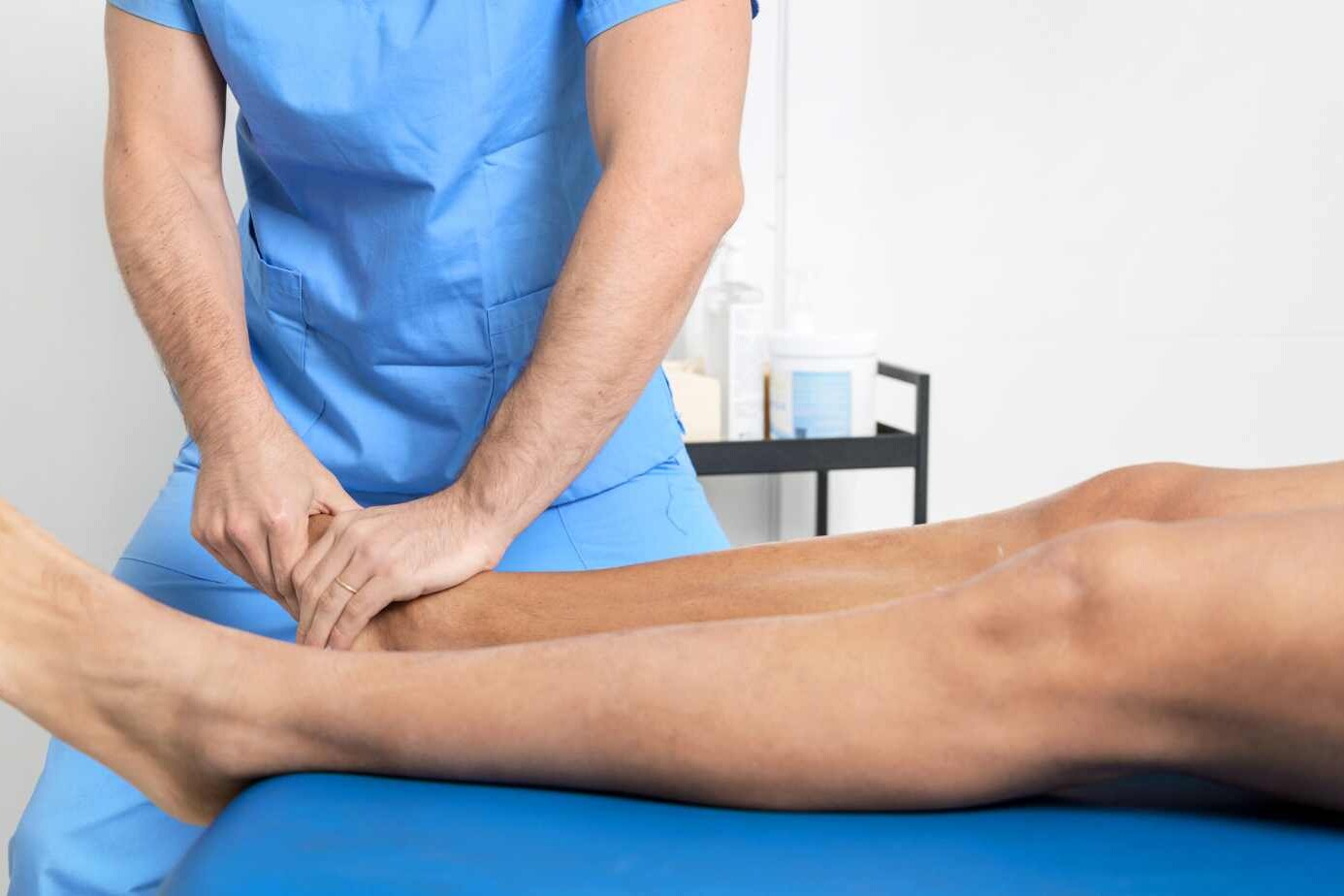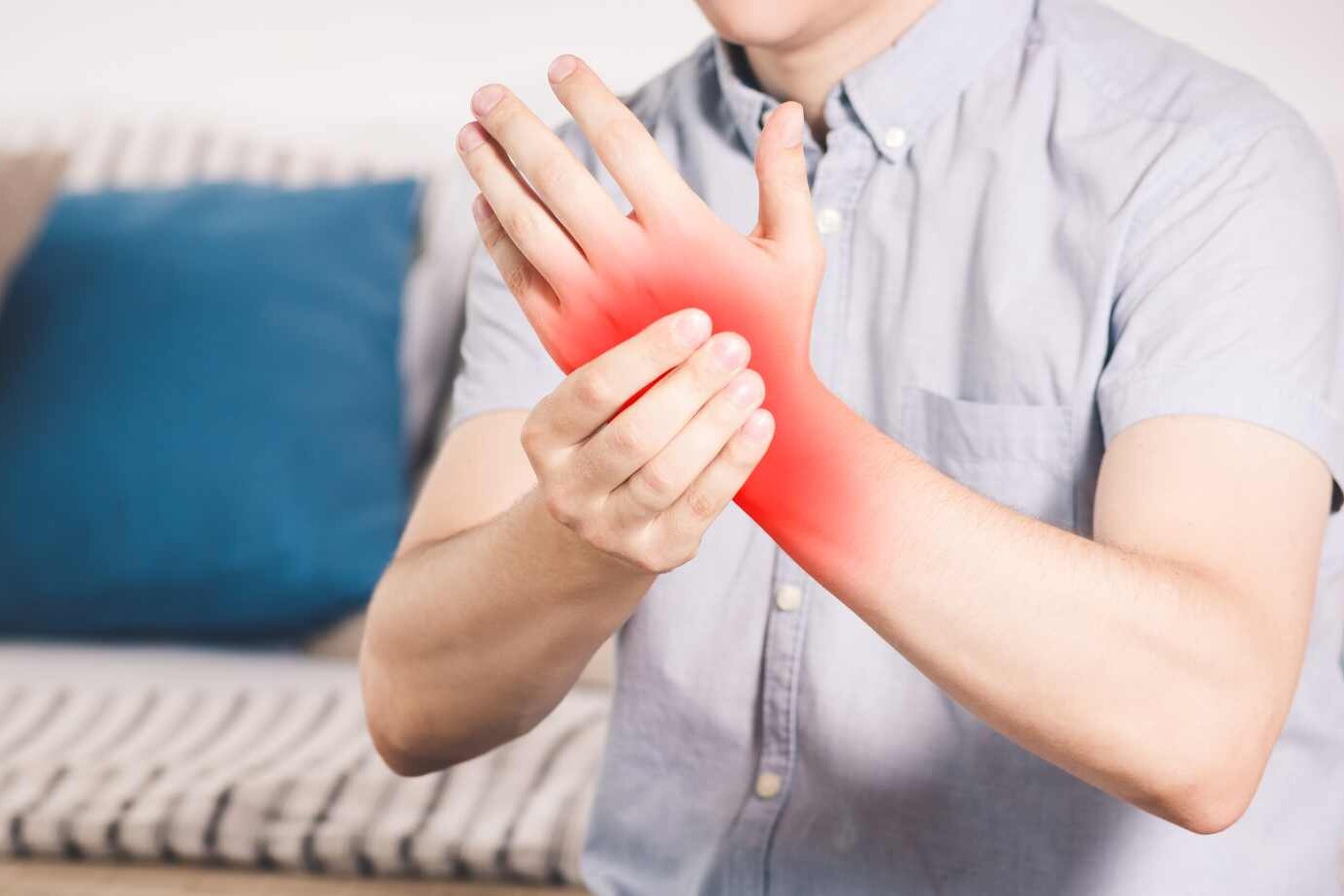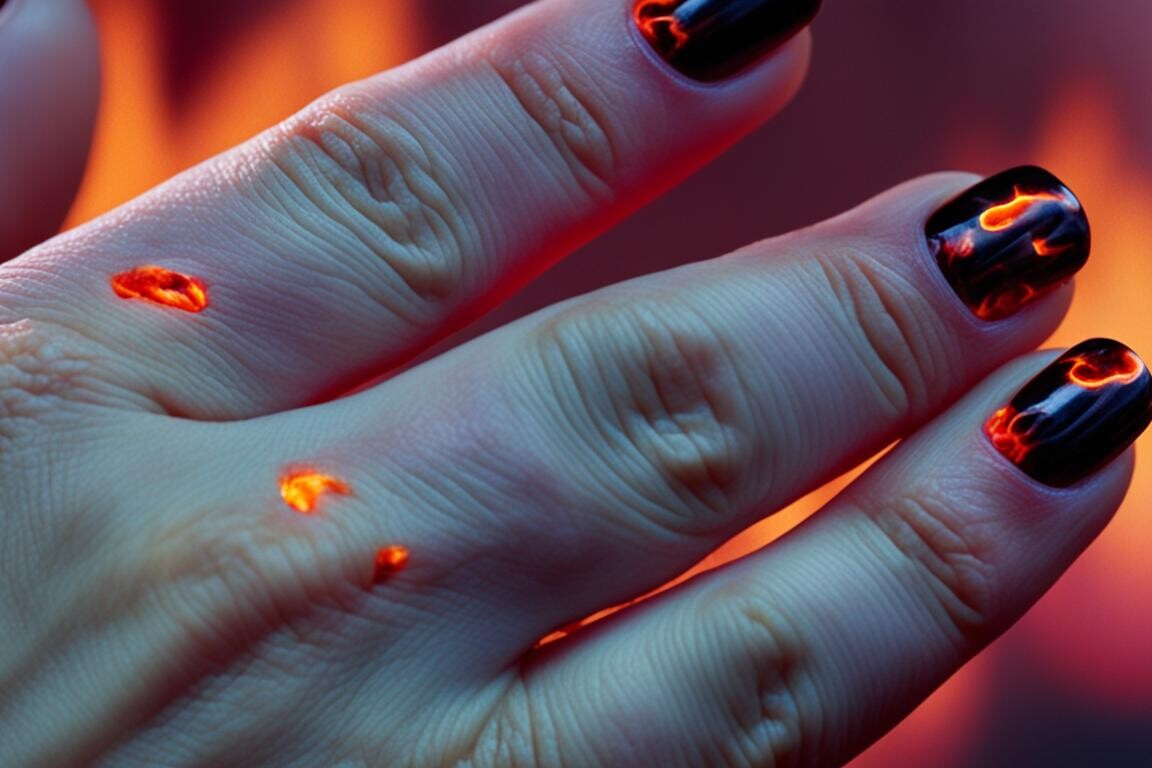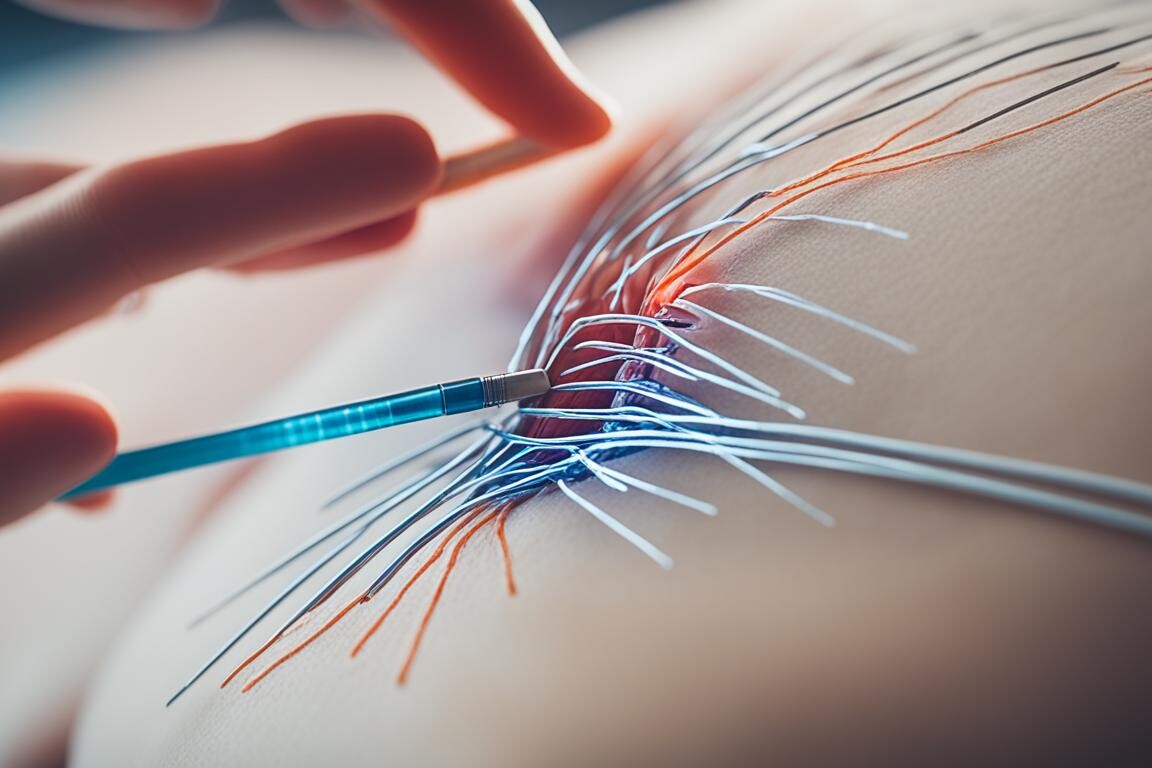Diagnosing CRPS is a complex process that relies on a thorough physical examination and evaluation of medical history. While there is no single test that can definitively diagnose CRPS, certain procedures can provide important clues to confirm the diagnosis.
These procedures often include bone scans, sweat production tests, X-rays, and magnetic resonance imaging (MRI). Each procedure helps healthcare professionals gather valuable insights into the condition and rule out other potential causes of your symptoms. By examining these test results alongside your medical history and physical examination findings, healthcare providers can arrive at a diagnosis.
Once diagnosed, the key to managing CRPS lies in a combination of medications, therapies, and lifestyle changes. In the following sections of this article, we will delve into each aspect of CRPS diagnosis and treatment, providing you with valuable information to help you navigate this challenging condition.
Table of Contents
ToggleProcedures for Diagnosing CRPS
Diagnosing complex regional pain syndrome (CRPS) involves a series of procedures that provide valuable insights into the condition. While there is no single test that can definitively diagnose CRPS, these procedures help healthcare professionals understand the underlying factors contributing to the patient’s symptoms.
A bone scan is one of the procedures used to identify bone changes associated with CRPS. By injecting a small amount of radioactive material into the body, healthcare providers can detect abnormalities in bone metabolism. This information is crucial in ruling out other conditions and confirming a CRPS diagnosis.
Another procedure used in the diagnosis of CRPS is sweat production testing. This test measures the difference in sweat production between the affected limb and the unaffected limb. It helps healthcare providers assess the autonomic nervous system’s involvement in CRPS and can provide further evidence for a diagnosis.
X-rays are commonly used to detect changes in bone mineral density in later stages of CRPS. Loss of minerals from bones is a characteristic feature of the disease, and X-rays can reveal these changes. Additionally, X-rays can help rule out other potential causes of symptoms, such as fractures or joint abnormalities.
An MRI (magnetic resonance imaging) is a non-invasive procedure that provides detailed images of the body’s internal structures. It can be particularly helpful in diagnosing CRPS by revealing tissue changes that may not be visible on X-rays. The information obtained from an MRI aids in ruling out other conditions and confirming a diagnosis of CRPS.
Although these procedures do not provide a definitive diagnosis on their own, they play a crucial role in the diagnostic process, contributing essential information and ruling out other potential causes of the patient’s symptoms.
Medications for Treating CRPS
The treatment of Complex Regional Pain Syndrome (CRPS) often involves the use of medications to alleviate symptoms and improve quality of life. Medications can help manage pain, reduce inflammation, and address associated symptoms. The choice of medication depends on the severity of the condition and the specific needs of the individual.
Pain Relievers
Pain relievers, such as aspirin, ibuprofen, and naproxen sodium, can be effective in managing mild pain and reducing inflammation associated with CRPS. These over-the-counter nonsteroidal anti-inflammatory drugs (NSAIDs) can help provide relief in the early stages of the condition.
Stronger Pain Relievers
In cases of more severe pain, stronger pain relievers may be prescribed by a healthcare professional. Opioid medications, such as codeine or oxycodone, can provide relief for individuals experiencing intense pain that is not effectively managed by over-the-counter medications. These medications should be used under the close supervision and guidance of a healthcare provider due to their potential for dependence and side effects.
Antidepressants
Neuropathic pain, a common symptom of CRPS, can often be managed with the use of antidepressant medications. Tricyclic antidepressants, such as amitriptyline or nortriptyline, and selective serotonin and norepinephrine reuptake inhibitors (SNRIs), such as duloxetine, can help alleviate pain and improve mood by affecting the brain’s perception of pain. These medications can also address any associated symptoms of depression or anxiety.
Anticonvulsants
Anticonvulsant medications, typically used to treat seizures, can also be beneficial in managing neuropathic pain. Medications such as gabapentin or pregabalin help stabilize nerve activity and reduce the transmission of pain signals. These medications can be particularly effective in individuals who experience burning or shooting pain in CRPS-affected areas.
Corticosteroids
Corticosteroids, such as prednisone or methylprednisolone, are anti-inflammatory medications that can help reduce inflammation and improve mobility in individuals with CRPS. These medications are often used in the early stages of the condition to reduce swelling and promote healing. Corticosteroids may be administered orally or through injections directly into the affected area.
Bone-Loss Medications
CRPS can sometimes lead to bone loss or osteoporosis in the affected limb. In such cases, medications aimed at preventing or treating bone loss may be prescribed. These medications, such as bisphosphonates or calcitonin, help improve bone density and reduce the risk of fractures.

It is important to note that the use of medications in CRPS treatment should be done under the guidance and supervision of a healthcare professional. They will consider the individual’s specific symptoms, medical history, and any potential interactions with other medications. The goal of medication use in CRPS is to alleviate pain, reduce inflammation, and improve overall function and quality of life.
| Medication Type | Examples | Purpose |
|---|---|---|
| Pain Relievers | Aspirin, ibuprofen, naproxen sodium | Manage mild pain and reduce inflammation |
| Stronger Pain Relievers | Codeine, oxycodone | Provide relief for severe pain |
| Antidepressants | Amitriptyline, nortriptyline, duloxetine | Alleviate neuropathic pain and improve mood |
| Anticonvulsants | Gabapentin, pregabalin | Stabilize nerve activity and reduce pain transmission |
| Corticosteroids | Prednisone, methylprednisolone | Reduce inflammation and improve mobility |
| Bone-Loss Medications | Bisphosphonates, calcitonin | Prevent or treat bone loss in affected limb |
Therapies for Managing CRPS
Various therapies can help manage CRPS symptoms. By incorporating these therapies into a comprehensive treatment plan, individuals with CRPS can experience relief and improved quality of life.
Heat Therapy
Heat therapy is a non-invasive technique that can provide relief for swelling and discomfort associated with CRPS. Applying a warm compress or using warm water treatments can help promote blood flow, reduce muscle tension, and alleviate pain.
Topical Analgesics
Topical analgesics, such as capsaicin cream and lidocaine patches, can be applied directly to the affected area to reduce hypersensitivity and provide localized pain relief. These medications work by blocking pain signals and numbing the skin.
Physical Therapy
Physical therapy plays a crucial role in managing CRPS by improving range of motion, strength, and function of the affected limb. A skilled physical therapist can design a personalized exercise program focused on stretching and strengthening exercises to enhance mobility and reduce pain.
Mirror Therapy
Mirror therapy is a unique approach that uses a mirror to trick the brain into perceiving improvement in function and reducing pain. By reflecting the image of the unaffected limb onto the affected limb, mirror therapy can help improve motor control and reduce CRPS-related symptoms.
Transcutaneous Electrical Nerve Stimulation (TENS)
TENS is a therapy that uses a small device to deliver low-intensity electrical currents to the affected area. These electrical impulses help to disrupt pain signals, stimulate natural pain-relieving mechanisms, and promote circulation, providing temporary relief from CRPS symptoms.
Biofeedback Techniques
Biofeedback techniques involve using electronic sensors to monitor physiological responses and provide real-time feedback. This therapy helps individuals with CRPS learn to control their body’s responses to pain, stress, and other triggers. By mastering these techniques, individuals can reduce pain perception and increase relaxation.
These therapies, combined with other treatment modalities, such as medications and lifestyle changes, can play a vital role in managing CRPS symptoms and improving overall well-being.
Coping and Support for CRPS
Living with a chronic and painful condition like CRPS can be challenging. It’s important to find ways to cope with the physical and emotional impacts of the condition. Here are some strategies that can help:
Maintaining Daily Activities
Despite the challenges posed by CRPS, it’s important to try to maintain your typical daily activities as much as possible. This can help you maintain a sense of normalcy and routine, which can be beneficial for your overall well-being.
Staying Connected
Staying connected with friends and family is essential for emotional support. Lean on your loved ones for comfort and understanding. Sharing your experiences and feelings with others who care about you can provide a sense of belonging and reduce feelings of isolation.
Pursuing Hobbies
Continuing to pursue hobbies and activities that you enjoy is an important part of maintaining a fulfilling life with CRPS. Engaging in activities that bring you joy can help distract from pain and improve your overall mood. It’s crucial to find hobbies that you can still enjoy despite your condition.
Seeking Professional Help
Dealing with CRPS can be overwhelming, and it’s okay to ask for help. Seeking professional help, such as therapy or joining a support group, can provide valuable coping skills and emotional support. Mental health professionals can offer guidance and strategies to help you navigate the challenges of living with CRPS.
Remember, everyone’s experience with CRPS is unique, so find the coping mechanisms that work best for you. Be patient with yourself and give yourself time to adjust. With the right support and strategies, you can find ways to manage the challenges of living with CRPS and lead a fulfilling life.

Preparing for a CRPS Appointment
To make the most of your CRPS appointment, it’s important to prepare beforehand. Here are some steps you can take to ensure a productive and informative discussion with your healthcare provider:
- Note your symptoms: Make a detailed note of your symptoms, including the severity, location of pain, stiffness, or sensitivity. This can help your healthcare provider better understand your condition and develop an appropriate treatment plan.
- Prepare questions: Write down any questions you have for your healthcare provider. These may include inquiries about the likely cause of your symptoms, recommended tests and treatments, alternative approaches, and management of existing health conditions. Having your questions written down ensures that you don’t forget to ask anything important.
- Gather information: It’s helpful to gather information about CRPS from reliable sources. This can include articles, research papers, or websites dedicated to providing accurate and up-to-date information about the condition. Sharing this information with your loved ones can also help them understand your situation better and provide you with the support you need.
Taking these steps before your CRPS appointment can help you make the most of your time with your healthcare provider and ensure that all your concerns are addressed. Remember, effective communication and preparation are key to receiving the best possible care.
Treatment Approaches for CRPS
Early treatment plays a crucial role in improving symptoms and managing complex regional pain syndrome (CRPS). To effectively address this condition, a combination of therapies tailored to the individual’s specific case is often necessary. Treatment approaches may include:
- Physical therapy: A cornerstone of CRPS treatment, physical therapy aims to improve functionality, reduce pain, and enhance overall quality of life. Through targeted exercises, physical therapists work to improve blood flow, flexibility, strength, and muscle tone in the affected limb. Techniques such as graded motor imagery, mirror therapy, and desensitization may also be utilized to alleviate pain and restore function. The use of physical therapy for CRPS treatment is supported by the latest research and clinical evidence.
- Occupational therapy: Occupational therapists play a vital role in helping individuals with CRPS regain independence and resume daily activities. They provide guidance and assistive devices to manage pain and increase functionality in daily tasks.
- Lifestyle changes: Making certain lifestyle modifications can greatly contribute to managing CRPS symptoms. These may include quitting smoking, managing existing health conditions, such as diabetes and poor circulation, and keeping the affected limb elevated while resting or sleeping to reduce swelling. Regular exercise and wearing compression stockings or sleeves may also be recommended to enhance circulation and minimize swelling.
- Psychosocial and behavioral therapy: CRPS is often associated with emotional challenges such as anxiety, depression, and stress, which can exacerbate pain. Psychosocial and behavioral therapy, including talk therapy, can provide valuable support in managing these emotional factors. By identifying and addressing unhealthy thoughts, behaviors, and emotions, individuals can develop effective coping strategies and improve overall well-being.
- Medications: In some cases, medications may be prescribed to manage pain and alleviate accompanying symptoms of CRPS. Pain relievers, antidepressants, anticonvulsants, and corticosteroids are commonly used to address neuropathic pain, reduce inflammation, and improve mobility. However, it’s crucial to work closely with a healthcare professional to determine the most appropriate medication regimen for each individual.
- Alternative therapies for pain management: Complementary approaches, such as acupuncture, chiropractic care, and meditation, may be considered as part of a comprehensive CRPS treatment plan. These therapies can provide additional pain relief and support overall well-being.
It’s important to note that each person’s treatment plan for CRPS will vary based on their unique needs and symptoms. Consulting with a multidisciplinary team of healthcare professionals, including physical therapists, occupational therapists, and pain management specialists, is crucial for developing a tailored treatment approach that addresses the comprehensive needs of individuals with CRPS.

| Treatment Approaches | Description |
|---|---|
| Physical therapy | Aims to improve blood flow, flexibility, strength, and muscle tone. Uses techniques like graded motor imagery, mirror therapy, and desensitization. |
| Occupational therapy | Assists individuals in regaining independence and resuming daily activities with guidance and assistive devices. |
| Lifestyle changes | Involves quitting smoking, managing health conditions, keeping the affected limb elevated, regular exercise, and wearing compression stockings. |
| Psychosocial and behavioral therapy | Provides support in managing anxiety, depression, and stress through talk therapy and coping strategy development. |
| Medications | Pain relievers, antidepressants, anticonvulsants, and corticosteroids may be prescribed to manage pain and reduce inflammation. |
| Alternative therapies | Complementary approaches such as acupuncture, chiropractic care, and meditation may provide additional pain relief. |
Importance of Physical Therapy for CRPS
As an essential component of CRPS treatment, physical therapy plays a crucial role in improving the overall well-being of individuals with the condition. Through targeted exercises and techniques, a physical therapist can help enhance blood flow to the affected limb, improve flexibility, strength, muscle tone, and overall function.
Physical therapy for CRPS involves a variety of approaches that aim to reduce pain, improve movement, and re-establish the brain’s perception of the affected limb. Some of these techniques include:
- Graded motor imagery: This therapy involves a step-by-step progression of mental exercises that aim to retrain the brain’s response to movement and reduce pain.
- Mirror therapy: By using a mirror to create an illusion of movement in the affected limb, mirror therapy can improve motor function, alleviate pain, and enhance body awareness.
- Desensitization: This approach focuses on gradually exposing the affected limb to different textures, temperatures, and stimuli to reduce hypersensitivity and improve tolerance.
By incorporating physical therapy into the treatment plan, individuals with CRPS have the opportunity to regain control over their symptoms and improve their quality of life. The exercises and techniques employed by physical therapists help promote better blood flow, which can aid in the healing process. Additionally, through targeted exercises, individuals can enhance their flexibility, strength, and muscle tone, allowing them to regain function and increase their range of motion.
Physical therapy sessions are typically tailored to the individual’s specific needs and may involve a combination of exercises, manual techniques, and therapeutic modalities. The guidance and support provided by a physical therapist are vital in helping individuals overcome physical obstacles and achieve their rehabilitation goals.
It is important to consult a healthcare professional or specialist trained in CRPS to determine the most suitable physical therapy program for each individual’s unique circumstances. By working closely with a physical therapist, individuals with CRPS can take an active role in their recovery and regain control over their lives.
Lifestyle Changes for Managing CRPS
Making certain lifestyle changes can greatly contribute to the management of CRPS symptoms. By incorporating these changes into your daily routine, you can improve your overall well-being and find relief from the discomfort associated with CRPS.
1. Quit Smoking
One of the most important lifestyle changes for managing CRPS is quitting smoking. Smoking interferes with nerve regeneration and can worsen the symptoms of CRPS. By quitting smoking, you give your body a better chance to heal and improve your overall health.
2. Manage Health Conditions
Managing any existing health conditions is crucial for nerve healing and symptom management in CRPS. If you have diabetes or poor circulation, it’s important to follow a healthy diet, take prescribed medications, and monitor your blood sugar levels regularly. By effectively managing these conditions, you can support nerve healing and minimize the impact of CRPS.
3. Keep the Affected Limb Elevated
Keeping the affected limb elevated while resting or sleeping can help reduce swelling and improve circulation. Elevating the limb helps to counteract the pooling of blood and fluid, which commonly occurs in CRPS. By elevating the limb, you can alleviate discomfort and promote better circulation to the affected area.
4. Regular Exercise
Engaging in regular exercise is beneficial for overall health and can also help manage CRPS symptoms. Exercise improves blood circulation, which aids in reducing inflammation and relieving pain. It’s important to start with gentle exercises and gradually increase intensity as tolerated. Consult with your healthcare provider or a physical therapist to develop an exercise plan that suits your specific needs and abilities.
5. Compression Stockings
Wearing compression stockings or sleeves can help limit swelling in the affected limb. Compression garments apply gentle pressure, which supports blood flow and reduces fluid retention. Talk to your healthcare provider about the appropriate compression level and type of garment to use.

By incorporating these lifestyle changes into your daily routine, you can take an active role in managing CRPS symptoms. Quitting smoking, managing existing health conditions, keeping the affected limb elevated, engaging in regular exercise, and wearing compression stockings can significantly contribute to symptom relief and overall well-being.
Psychosocial and Behavioral Therapy for CRPS
Living with Complex Regional Pain Syndrome (CRPS) can be emotionally challenging, as it is often accompanied by anxiety, depression, and stress that can worsen pain symptoms. Fortunately, psychosocial and behavioral therapy offers effective strategies for managing these emotional factors and improving overall well-being.
Talk therapy, also known as psychotherapy, is a key component of psychosocial and behavioral therapy for CRPS. By working with a pain management clinical psychologist who specializes in CRPS, individuals can learn coping strategies specifically tailored to their unique circumstances and address the underlying factors contributing to their pain and symptoms.
Through psychotherapy sessions, individuals can explore and identify unhealthy thoughts, behaviors, and emotions that may be exacerbating their pain. By promoting positive cognitive and behavioral changes, talk therapy helps individuals develop healthier coping mechanisms and a more optimistic outlook on life.
Pain Coping Strategies
As part of psychosocial and behavioral therapy, patients are taught pain coping strategies that can effectively alleviate CRPS symptoms. These strategies include:
- Deep breathing exercises
- Progressive muscle relaxation
- Mindfulness meditation
- Stress management techniques
- Positive visualization
- Journaling
By incorporating these strategies into their daily lives, individuals with CRPS can better manage their anxiety, depression, and stress levels, thereby reducing the impact of these emotional factors on their pain experience.
In addition to talk therapy and pain coping strategies, psychosocial and behavioral therapy may include other modalities such as cognitive-behavioral therapy (CBT) and acceptance and commitment therapy (ACT). These therapies focus on changing negative thought patterns, developing acceptance of one’s condition, and committing to actions that align with personal values.
It is important to note that psychosocial and behavioral therapy should not replace other components of CRPS management, such as physical therapy, medications, and lifestyle changes. Instead, it should be integrated into a holistic treatment approach that addresses the physical, emotional, and psychological aspects of CRPS.
Psychosocial and behavioral therapy for CRPS provides individuals with the tools and support they need to effectively manage their pain, improve their quality of life, and regain control over their emotional well-being.
Conclusion
In conclusion, the treatment of Complex Regional Pain Syndrome (CRPS) requires a holistic and multidisciplinary approach. While there is no cure for CRPS, early intervention and a combination of therapies can significantly improve symptoms and enhance quality of life. It is crucial to develop individualized treatment plans that address the unique needs of each person with CRPS, incorporating physical therapy, medications, lifestyle modifications, and psychosocial support.
By adopting a comprehensive approach, we can effectively manage the physical, emotional, and psychological aspects of CRPS. Physical therapy plays a vital role in improving blood flow, flexibility, strength, muscle tone, and overall function. Medications can help alleviate pain and inflammation, while lifestyle changes such as quitting smoking, managing underlying health conditions, and regular exercise can contribute to symptom relief.
Additionally, psychosocial support is essential in addressing the emotional and psychological impact of CRPS. Seeking help from a pain management clinical psychologist and utilizing talk therapy can assist individuals in managing anxiety, depression, and stress associated with the condition. In this way, we can develop effective pain coping strategies and promote overall well-being.
FAQ
What procedures are used to diagnose CRPS?
The diagnosis of CRPS may involve bone scans, sweat production tests, X-rays, and MRI. These procedures can provide important clues to confirm the condition.
Are there any specific medications used in the treatment of CRPS?
Yes, medications like pain relievers, antidepressants, anticonvulsants, and corticosteroids are commonly prescribed to help manage the symptoms of CRPS.
What therapies can be used to manage CRPS?
Therapies such as heat therapy, topical analgesics, physical therapy, mirror therapy, TENS, and biofeedback techniques can be beneficial in managing CRPS symptoms.
How can I cope with living with CRPS?
It is important to maintain daily activities, stay connected with friends and family, pursue hobbies, and seek professional help or therapy to develop coping skills and emotional support.
How can I prepare for a CRPS appointment?
Prior to your appointment, make note of your symptoms and questions, as well as gather information about CRPS from reliable sources to share with your healthcare provider.
What are the treatment approaches for CRPS?
Treatment for CRPS often involves a combination of therapies tailored to the individual’s needs, such as physical therapy, medications, lifestyle changes, and psychosocial support.
Why is physical therapy important in the treatment of CRPS?
Physical therapy can help improve blood flow, flexibility, strength, muscle tone, and function of the affected limb through targeted exercises and techniques such as mirror therapy and desensitization.
Are there any lifestyle changes that can help manage CRPS?
Yes, lifestyle changes such as quitting smoking, managing existing health conditions, elevating the affected limb, regular exercise, and wearing compression stockings can aid in managing CRPS symptoms.
Can psychosocial and behavioral therapy help with CRPS?
Yes, psychosocial and behavioral therapy, including talk therapy, can be beneficial in managing anxiety, depression, and stress associated with CRPS and teach coping strategies to address emotional factors.
What is the importance of a comprehensive, multidisciplinary approach in CRPS diagnosis and treatment?
A comprehensive approach that considers both physical and psychological factors is crucial in managing CRPS. This can involve a combination of therapies, medications, and individualized treatment plans to improve symptoms and quality of life.
Source Links
About The Author

This article is medically reviewed by Dr. Chandril Chugh, Board-Certified Neurologist, providing expert insights and reliable health information.
Dr. Chandril Chugh is a U.S.-trained neurologist with over a decade of experience. Known for his compassionate care, he specializes in treating neurological conditions such as migraines, epilepsy, and Parkinson’s disease. Dr. Chugh is highly regarded for his patient-centered approach and dedication to providing personalized care.
→ Book a consultation to discover which remedies suit your needs best.




